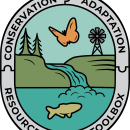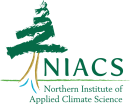Location
States
Colorado, Kansas, Montana, Nebraska, New Mexico, North Dakota, Oklahoma, South Dakota, Texas, WyomingEcosystem
Mountain, Prairie, RuralIntroduction
Grasslands are among the most endangered and least protected ecosystems in the United States (Henwood, 2010). Land development and agricultural conversion continue to degrade grassland ecosystems and threaten the survival of wildlife, such as grassland-dependent birds (Bernath-Plaisted et al., 2023a). Habitat loss and degradation over the last 60 years have decreased the abundance of grassland birds and reduced their reproductive success and survival in various ways, thus contributing to a widespread population decline (Rosenberg et al., 2019). These changes are evident throughout the Central Flyway region of the United States, spanning from Texas to the Northwest Territories of Canada. This ecologically diverse region serves as a crucial bird migration route within the Great Plains of North America. Management action is necessary to reverse the detrimental effects of human activities and support healthy grasslands. As climate change continues to create more unpredictable and extreme weather conditions, it is necessary for researchers to address existing knowledge gaps regarding how grassland birds react to these changes (Maresh Nelson et al., 2023).
Microclimates within grasslands may provide one avenue to better understand the effects of climate on nesting birds, and possibly inform their management under climate change. However, microclimates in North American temperate grassland have been little explored.
Therefore, researchers with the University of Wisconsin-Madison partnered with the Wisconsin Cooperative Wildlife Research Unit, the Midwest Climate Adaptation Science Center, USDA Northern Forests Climate Hub, and the Northern Institute of Applied Climate Science to conduct a broad synthesis of existing literature on climate adaptation practices to maintain the ecological functioning of grasslands under climate change, and in combination with these efforts, they also carried out field-based research in southern Wisconsin using fine-scale spatial observations of grassland habitats to understand how environmental variation affected climate conditions that nesting grassland birds are exposed to. After completing the literature review and field study, they conducted a workshop to reassess current strategies to ensure alignment with the new information on grassland microclimate dynamics and to inform the development of an Grassland Adaptation Menu that provides strategies, approaches, and tactics for conservation action in grassland habitats.
Key Issues Addressed
Climate change will likely exacerbate the decline of grassland bird populations and worsen existing environmental stressors such as the destruction of habitat due to human activity. Globally, surface temperatures have increased by 1.1°C since the start of the industrial era, and there is an increasing likelihood that average warming may exceed 2°C by the middle of the century (Calvin et al., 2023). These changes will contribute to more extreme weather events, such as droughts or flooding, which will threaten the survival of grassland ecosystems and species that depend upon them. Previous research suggests that grassland birds are sensitive to warming temperatures and increased variability in precipitation (Maresh Nelson et al., 2023; Conrey et al., 2016). However, more research is needed to understand how climate and habitat interact, and better inform adaptation strategies.
Understanding the complex interactions between climate change and grassland-dependent bird species will help researchers determine which specific weather variations have the most detrimental effects on avian survival. Within grasslands, there may be regions or certain conditions that can provide buffering from climate extremes. These locations, known as microrefugia, are crucial targets for grassland conservation. Properly identifying microrefugia is an issue for researchers due to the low resolution of existing climatological and environmental data. New climatological modeling systems with sharper resolution are needed to locate these regions and to determine what leads to their formation.
The Central Flyway encompasses many ecologies. Within this region, multiple land management practices take place on both private and public land. Ecological complexities coupled with varying land management practices require a multifaceted approach to grassland conservation. Management strategies in the cooler, northern regions of the Central Flyway may be different from those in the warmer, southern region.
Achieving grassland conservation within this region requires a diverse set of tactics organized into a readily accessible database for resource managers. At the moment, there are no existing repositories to consolidate all of these grassland adaptation strategies into an accessible format.
Project Goals
- Determine the effects of climate variables on grassland bird populations to better understand and synthesize management strategies geared towards the preservation and restoration of grassland ecosystems by conducting reviews of relevant existing scientific literature.
- Identify the characteristics of grassland microrefugia that may shelter grassland birds from the effects of climate change and develop new climate modeling tactics to locate these microrefugia.
- Develop an accessible menu of adaptation strategies that synthesizes existing and new management strategies geared towards the preservation and restoration of grassland ecosystems under a changing climate.
Project Highlights
Literature Reviews: Literature reviews were conducted to understand how temperature and precipitation fluctuations affected grassland bird demographics, and to synthesize existing tactics for grassland conservation tactics. Researchers found that heatwaves threatened bird survival and reproduction, and decreased precipitation predominantly had a negative impact on bird demographics, with waterfowl having greater sensitivity than passerine and gamebirds (Maresh Nelson et al., 2023). With these relationships in consideration, researchers conducted a review of existing North American grassland management strategies under climate change. They identified recommended strategies to conserve habitat and mediate population declines for sensitive grassland organisms like grassland birds, and incorporated them into the Grassland Adaptation Menu. Frequently recommended management approaches for grassland climate adaptation included things like conserving future grassland refugia, increasing connectivity, using heterogeneity to improve resilience, shifting the timing and intensity of some management activities, and restoring hydrology.
Drone Use to Model Grassland Microclimates: To better understand how grassland habitat conditions may affect climate exposure, researchers implemented a novel approach to the remote sensing of grasslands. They used drones to map topographical and vegetation variations within two warm-season and two cool-season grasslands in Southern Wisconsin. Foursites, ranging from 8.7 to 11 hectares, were mapped at a 60 cm resolution. Sensors deployed at ground level within the mapped regions measured temperature and vapor pressure. The Random Forest Model, a machine-learning algorithm, combined the mapped data and collected weather information to predict key characteristics of grassland microclimates, which included complex topography and extensive vegetation cover (Bernath-Plaisted et al., 2023b). Since these characteristics were similar in both warm and cool-season grasslands, this method could theoretically be used to model grassland microclimates in other regions of temperate grassland. Researchers then applied these microclimate data to better understand the vulnerability of nesting grassland birds (Bernath-Plaisted et al. 2025)
Grasslands Adaptation Menu: The researchers used knowledge from the literature reviews to synthesize management strategies for grasslands under climate change. Workshops conducted with grassland practitioners from the private and public sectors reviewed the applicability of these strategies to their work, provided suggestions, and researchers then consolidated the results of the literature review and comments from resource professionals into a formal co-created Grassland Adaptation Menu. The menu consists of eight broad strategies, funneled into 31 targeted approaches, which are broken down into 144 specific tactics. This menu was applied in a use case study by The Nature Conservancy (TNC) to create a climate adaptation plan for the Samuel H. Ordway Prairie. They selected specific management strategies from the menu such as investing in private lands outreach to establish more grassland and wetland easement that will mitigate grassland conversion.
Lessons Learned
As climate change advances, there will likely be a growing need to adjust the management of grassland ecosystems and to protect climate-vulnerable species. Thus, future literature reviews will be needed to reevaluate currently understood relationships between climatological changes and grassland bird survival, and to evaluate the effectiveness of implemented grassland management strategies.
While pioneering a new approach to grassland remote sensing, the researchers learned how to operate new technology and overcome technical hurdles. A key issue faced was the potential that ground sensors exaggerated maximum temperatures in an open environment despite being housed in ventilated PVC capsules coated with reflective tape, which were designed to reduce errors in temperature measurements by around 50% (Maclean et al., 2021). However, by working with an interdisciplinary team of remote sensing experts, climatologists, and ecologists, the research team concluded that grassland microclimate models still had high utility for identifying relative differences in hot and cool areas within grasslands at fine scales, and understanding which environmental factors contributed most to microclimate variability, which was the primary objective.
From a grassland bird perspective, the field study also indicated that grassland-dependent (obligate) species struggle to use cooler nesting locations primarily due to their strong preferences for specific vegetation structures when selecting a nest site (Bernath-Plaisted et al., 2025). Obligate species did not select cooler microclimates, even though these sites could help reduce heat exposure. By contrast, shrub-associated and more generalist species appeared to benefit from temperature buffering provided by dense vegetation. Developing effective conservation strategies requires balancing vegetation management to enhance microclimates while also supporting the natural behaviors and habitat preferences of these species for successful adaptation. Further, this work highlights how habitat specialists may be more vulnerable to climate change, and will likely require more management attention.
Workshops effectively facilitated collaboration between researchers and practitioners in developing the Grassland Adaptation Menu–an approach previously employed by the Northern Institute of Applied Climate Science to develop adaptation menus for other ecosystems. These sessions helped bridge the science-to-action gap, resulting in a menu that, upon completion, will be accessible through an online database and is widely applicable to site-specific situations throughout North American grasslands. The success of this approach was demonstrated by TNC’s use of the menu to create a climate adaptation plan.
Next Steps
- Continue collaborative efforts to develop new management strategies and evaluate existing ones.
- Monitor the long-term effectiveness of developed management strategies and update the Grassland Adaptation Menu accordingly.
- Conduct additional research to further understand how specific climatological changes impact grassland bird survival.
Funding Partners
- Midwest Climate Adaptation Science Center
- USDA North Forests Climate Hub
- Northern Institute of Applied Climate Science
- USGS Wisconsin Cooperative Wildlife Research Unit
- National Climate Adaptation Science Center
Sources Referenced
- Bernath-Plaisted et al 2025. Sweating the small stuff: microclimatic exposure and species habitat associations inform climate vulnerability in a grassland songbird community.Biol. Lett. 21
- Bernath-Plaisted et al 2023a.. Review of Conservation Challenges and Possible Solutions for Grassland Birds of the North American Great Plains.Rangeland Ecology & Management, 90, 165–185.
- Bernath-Plaisted et al 2023b. Microclimate complexity in temperate grasslands: implications for conservation and management under climate change. Environmental Research Letters, 18(6), 064023.
- Calvin, K. et al. (2023).IPCC, 2023: Climate Change 2023: Synthesis Report. Contribution of Working Groups I, II and III to the Sixth Assessment Report of the Intergovernmental Panel on Climate Change [Core Writing Team, H. Lee and J. Romero (eds.)]. IPCC, Geneva, Switzerland. (First). Intergovernmental Panel on Climate Change (IPCC).
- Conrey, R. Y. et al. 2016. Extremes of heat, drought and precipitation depress reproductive performance in shortgrass prairie passerines. Ibis, 158(3), 614–629.
- Henwood, W. D. (2010).Toward a strategy for the conservation and protection of the world’s temperate grasslands. Great Plains Research, 20(1), 121–134.
- Maclean, I. et al. (2021). On the measurement of Microclimate, Methods in Ecology and Evolution, 12(8), 1397–1410.
- Nelson, S. E. et al. 2023. Sensitivity of North American grassland birds to weather and climate variability. Conservation Biology, 38(1).
- Rosenberg, K. V. et al. 2019. Decline of the North American avifauna. Science, 366(6461), 120–124.
- Sauer JR, Hines JE, Fallon JE, Pardieck KL, Ziolkowski JDJ, Link WA. 2012. The North American Breeding Bird Survey, Results and Analysis 1966 - 2011. Version 12.13.2011. U.S. Geological Survey, Patuxent Wildlife Research Center, Laurel, Maryland.
- Climate Change Response Framework - Grassland Adaptation Menu
- The Nature Conservancy - Samuel H. Ordway Prairie
Contacts
- Jacy Bernath-Plaisted, University of Wisconsin-Madison, bernathplais@wisc.edu
CART Lead Author
- Richard Cavaliero, CART Student Intern, imricky2022@gmail.com
Suggested Citation
Cavaliero,R.,I and Bernath-Plaisted, J. (2025). “Strategies for Reducing the Vulnerability of Grassland Birds to Climate Change within the Central Flyway.” CART. Retrieved from https://www.fws.gov/project/strategies-reducing-vulnerability-grassland-birds-cliamte-change-within-central-flyway.







